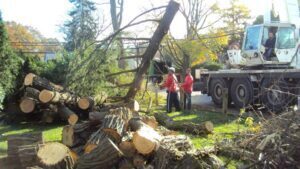Tree pruning tips

Tree pruning tips on how prune properly tree care?
Tree Pruning helps trees with becoming powerful and look perfect and appealing. One prunes a tree to remove harmed branches, allow for new growth or make a particular shape. It’s critical to do it accurately, so you don’t end up harming the tree.
At the point when you perform ordinary and careful tree pruning, your landscape will react with healthy and fiery development. As significant as this task may be, there are parts of trimming that can either damage or help your plants. Performed at an inappropriate time, you may do more damage than great with your trimmer.
1. Pick the Correct Time
The amazing opportunity for tree pruning relies upon every individual tree. You could cause injury if you perform this task at the incorrect time of the year. By and large, the best time to trim is the point at which the plant isn’t effectively growing.
The sleeping season would be the period when a deciduous assortment needs leaves. As you pick the best time, avoid from cutting during the coldest temperatures of the slow time of year, since this could cause injury, as well. For blossoming trees that bloom throughout the spring, cut after blooms blur. For plants that produce blooms in the mid or end of summer, cut in pre-spring or late-winter.
2. Survey the tree growth
The sapling’s growth will give important information about where you should trim. So set the time to look at the growth and position of the branches. Solid branches with U-molded points are useful for the health of the plant.
Powerless branches with V-shaped points are a positive contender for removal. Remove branches that cross and rub against one another, because this can cause disease.
Discover all the horizontal branches and remove any that are the greater part to seventy-five percent the distance across the starting branch. Guarantee that the staying horizontal growth is evenly spaced.
3. Continue Carefully
Take as much time as necessary and continue while tree trimming. Before you start and at continuous interims during the whole procedure, return a couple of steps to see how it looks like and what still needs to be done.
Never remove in excess of a fourth of the whole crown at once, as this could cause huge harm. If you need to remove more than this, spread the trimming over one year to prevent negative outcomes.
4. Skip Trimming
Times may happen when it’s best not to prune. In the event that you notice disease or rot spreading over the trunk and branches, don’t play out any tree pruning. But if you prune right now, you could spread sickness all the more rapidly over the whole plant. If you see any sort of leaking sick, hold back to trim until the dampness dries.
5. Get professional help
A few circumstances could happen when you should hire an expert arborist to help you with tree pruning.
Whenever you are unsure about how or when to approach the process of pruning, call for proficient assistance. If your task includes utilizing a stepping stool or cutting tool because of the size of the tree, it’s ideal to call an expert.
Keep your landscape healthy and neat with a normal clipping. By playing out this activity on a continuous premise, you will see it as less tedious and complicated.
Additional tree pruning tips
• Firstly, think about why you want to prune
• Identify the cost prune branches in the tree that come up during the whole pruning process or charge by tree companies
• Remove branches that show damage first and prune branches to help shape the tree.
• Prune trees according to tree types as little as possible
• The late winter and early spring is the best time or season for pruning arborvitae trees. If you are utilizing them in support, you will maybe need to shear them in pre-summer or late-spring also keep the highest point of the hedge smaller than the base. So that the lower branches get enough sunlight.
• The prune care of the Japanese lilac tree is simple since it keeps up its stunning shape without broad pruning. Grown as a tree, it just needs a periodic clip to remove harmed twigs and stems. As a bush, it might require renewal pruning every few years.
How to find a tree pruning service near me?
Finding the least expensive tree pruning services near to you is constantly a moving objective, however, I am going to take you through step by step how to discover them.
• Web search “tree service with your city/town”
• Skip page one outcomes and go directly to page two
• Take out the costly ones by workload*
• Attempt call during winter, it is always less expensive
• You will save an average of cost prune 43% by following these tips
